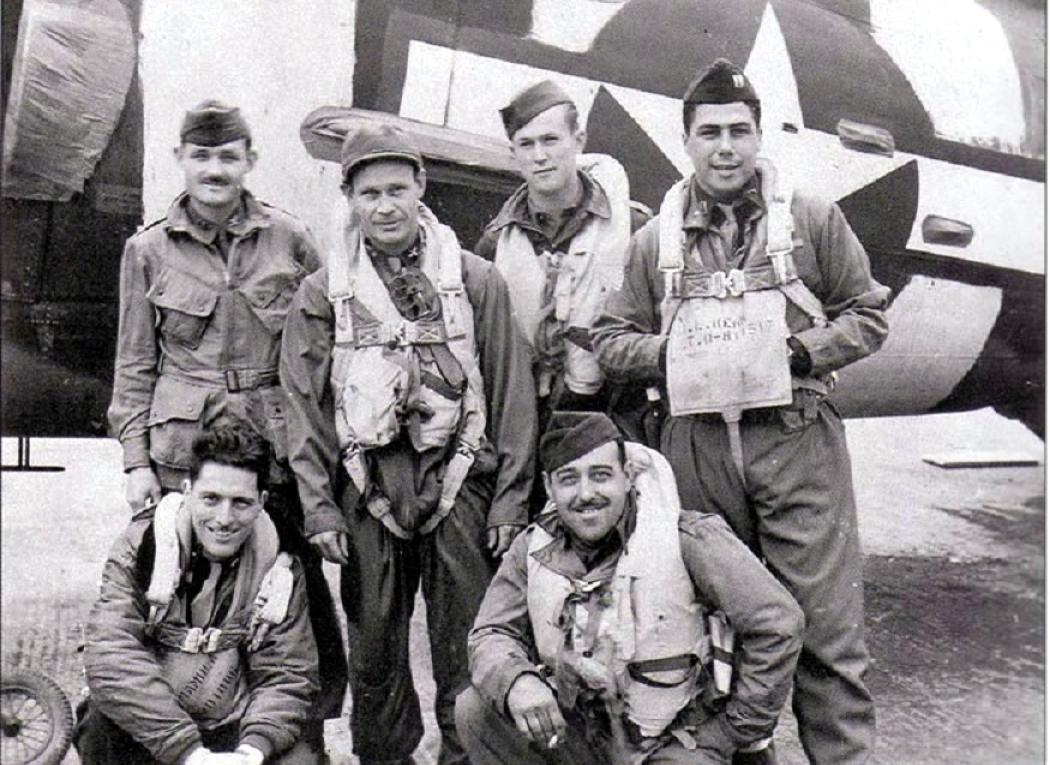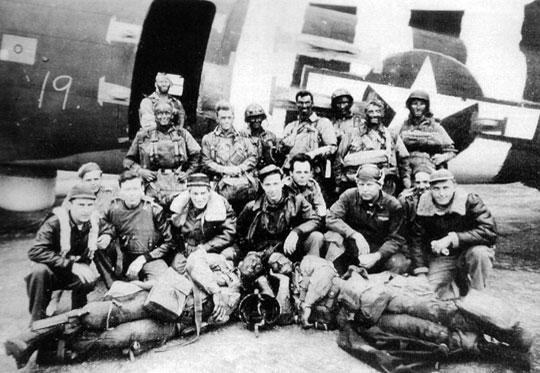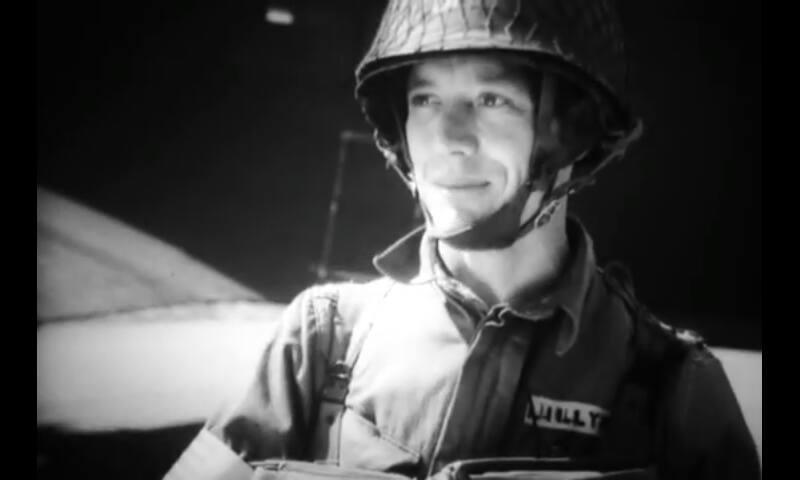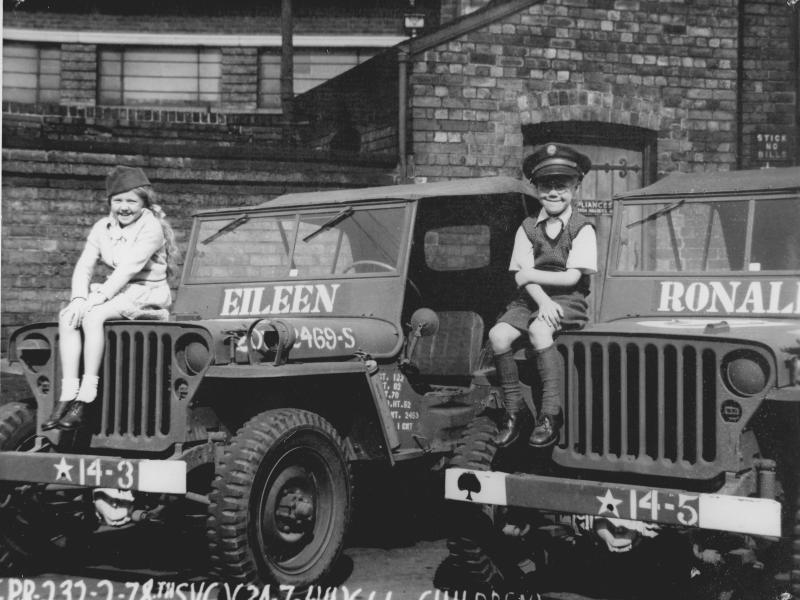US Pathfinders spearheaded Assault on D-Day


Pathfinder aircrew with Pathfinders of the US 101st Airborne Division at North Witham airfield on the evening 5 June 1944. A few hours later, these men were flying to Normandy for D-Day. (US Army)
When the United States entered World War II in 1941, who imagined that its Pathfinder troops would later spearhead the D-Day Airborne assault on Europe from a secluded airfield in south west Lincolnshire?
Late on 5 June 1944, elite US Pathfinder paratroopers and aircrew waited on the runways of RAF North Witham (now Forestry England-owned Twyford Wood) for a mission that helped to change the course of the war.
The sound of engines would have been ear-splitting as, at 21.54 hours British Double Summer Time, Lieutenant Colonel Joel Crouch and his crew took off from Runway 30.
Theirs was a top secret and highly dangerous pre-invasion mission ahead of D-Day and his was the first of 20 aircraft to take off that night, heading for Normandy.
Between them the specially-adapted Douglas C-47 Skytrain carried over 300 specially trained paratroopers drawn from the US Army's 82nd Airborne and 101st Airborne Divisions.
Fitted with special radar equipment for the mission, each aircraft was valued at $100,000 and its special equipment was worth $500,000.1
Pathfinder paratroops and aircrew had spent months training to position visual aids and Eureka radio signalling beacons and visual markers behind enemy lines. The beacons were intended to accurately guide the main invasion aircraft to drop zones, with following aircraft using Rebecca receivers to pick up the Eureka signal.
Of the 20 C-47s, 19 returned. One crashed in the sea, though the crew was recovered safely.
For the paratroopers, however, their chances of survival were slim; many were killed that night, and in the fighting that followed.
For more information on US Airborne Pathfinders in World War II, please click here:
US Airborne Pathfinders in World War II
- 1
Quoted by Lt Col David Hamilton, last surviving Pathfinder pilot, in an interview uploaded to YouTube in August 2022: https://www.youtube.com/watch?v=R0yoO0cdC3s&t=331s&ab_channel=AmericanVeteransCenter

Captain Frank Lillyman, commander of the 101st Airborne Division Pathfinders. (US Army, public domain)
KEEPING THE MISSION SECRET
Security became a real worry during final preparations.
At the end of May, security personnel closed off both Pathfinder troops and their specially adapted aircraft with barbed wire and military guards.
Captain Frank Lillyman had to share high level briefings with his officers – amidst fears that their security would be breached.
This was exemplified by a situation at North Witham when one of my lieutenants, Hendrickson, a commander of one of the sticks, visited blacked-out Nottingham. Although our people normally travelled in pairs, he was alone, separated from his partner, and struck by a laundry truck while crossing the street. He sustained, along with other injuries, a fractured leg and was taken to a military hospital. His strong sense of security made him refuse medical attention until I was notified. I was able to send a man to stay with him, to be certain that he did not divulge information while under anaesthetic and during recuperation.
One unfortunate sergeant from the opposite side of the airfield walked in unannounced as Lillyman handed out French invasion currency to troops on 4th May:
I immediately realized that this was a compromise and, although he was their chief non-commissioned officer, I had to lock him up. He stayed in that capacity until 7 June. Obviously his section chief on the other side of the airfield was very concerned by his absence, I could not tell him nor would the Base S-2 [Intelligence Officer] give him information or the reason as to why he was locked up. He was concerned by the fact that someone had kidnapped his sergeant and this created a rather embarrassing situation.
[Both extracts from American Airborne Pathfinders in World War II, by Jeff Moran (Schiffer Publishing Ltd, Altglen PA, USA, pp 45-46).]

A convoy of landing-craft sails across the English Channel toward the Normandy Invasion beaches on D-Day, 6 June 1944. Each of these craft is towing a barrage balloon for protection against low-flying German aircraft. (Public domain from US Coast Guard Collection in the US National Archives, photo 26-G-2333)
Crossing the Channel
The Allied amphibious fleets were well on their way to Normandy when the Pathfinders took to the air. Pathfinder jumpmasters would have witnessed the spectacle of the Allied fleet crossing the Channel as they passed overhead at 50 feet to avoid detection by enemy radar.
By 23.00 hours, the invasion of Normandy was in full swing.
For more information about Airborne operations on D-Day, please see here:

